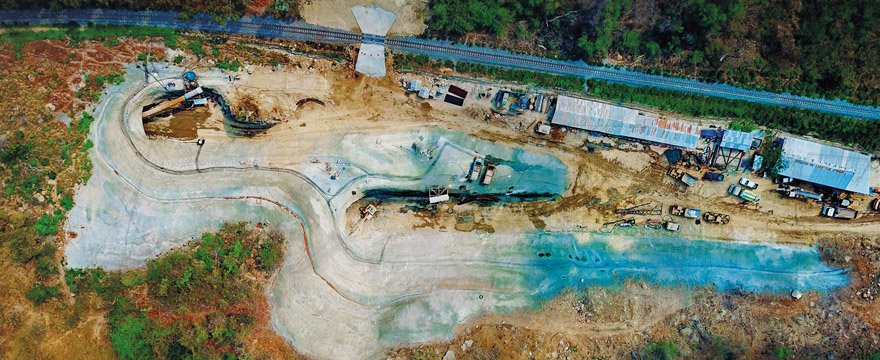Moving Thailand’s FREIGHT TO RAIL
Moving freight across a large, busy country like Thailand is an expensive business. Thailand’s logistical overhead is around 1.75 trillion baht (€50 billion) per year. To cut this overhead, the Thai government has started an ambitious program aiming to move a large amount of road and air freight to rail.
Thailand has about 4,000 km of rail network, most of which is single track. In order to boost the role of rail – currently carrying only 2 % of Thailand’s freight – the government plan includes doubling large parts of the single-track railroads.
One of the double tracks to be laid in the first phase (2018–2022) is the 120 km stretch on the Northeastern main line from Map Kabao to Thanon Chira Junction in the central part of the country. This involves the excavation of three new tunnels.
Two of the tunnel sites are located in Saraburi province, some 150 km northeast from Bangkok, and one in Nakhon Ratchasima province, 200 km from Bangkok. The main contractor for the work is Right Tunnelling (RT), who Robit have been supplying with rock tools for several years.
Drilling work began in January 2019. “We signed a consignment agreement for the job sites with RT in March. It covers a full set of our tools, including bits, rods, couplings and shanks. Things have run smoothly”, says Yong Woo Jeon, Distributor Business Manager for Robit in the region.
Once completed, Tunnel 1 near Map Kabao – a twin tunnel, 1.4 km each – will be the longest railway tunnel in Thailand. Tunnel 3 at Khlong Phai, Nakhon Ratchasima, will also be a relatively long twin tunnel (1 km each).
Moving a tonne of freight by road costs almost twice as much per kilometre as by rail. The railway project is still in its early stages, but once finished, Thailand can expect huge savings in logistical costs every year.
